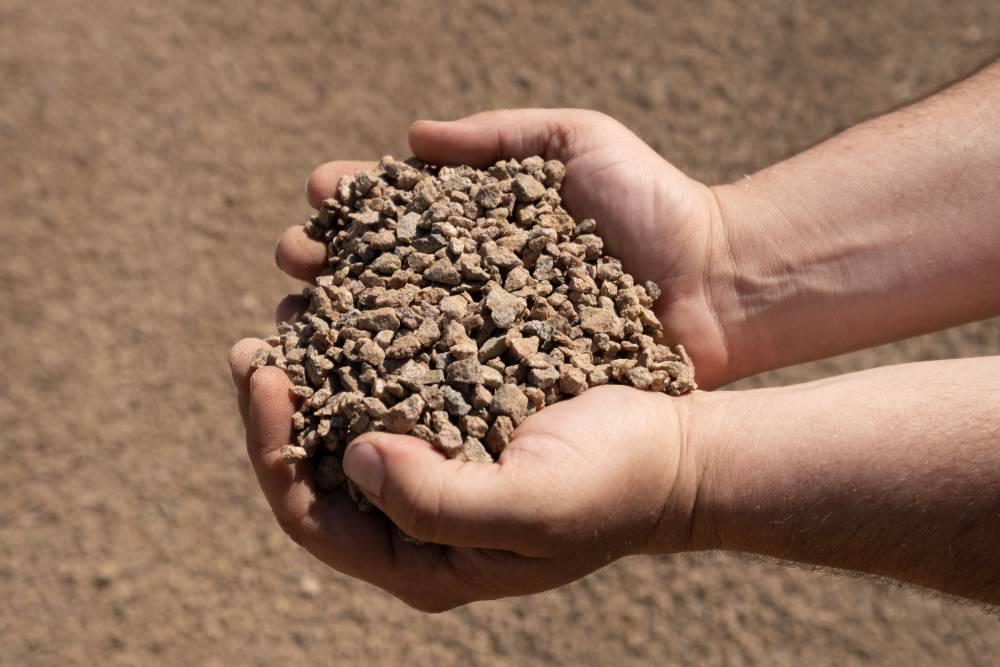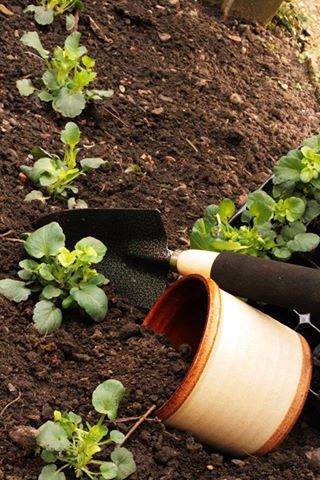This custom blended designer soil is distinct in that we take great care in blending some of the best products nature has to offer. SCM blends the following items into our PharmaSoil: Forest Humus, Douglas Fir Fines, Organic Compost, 3/8’s Mini Fines, #4 Perlite, Bat Guano, Worm Castings, Bone and Blood Meal, Pacific Kelp, Sphagnum Peat Moss and Oyster Shells. This product is designed for growing some of the finest highly sensitive plantings with an increased female production in mind. We have designed this with a perfect PH. We have grown some extremely beautiful plants with this Soil.
Year: 2014
Thanks to: Melinda Myers–Special to the Valley News
Picture yourself harvesting a few fresh strawberries for your cereal in the morning or perhaps picking a few apples from your own backyard tree to cook up into a pie. It is possible, even if you garden on a balcony or small lot. And even if you have plenty of space, you will still appreciate the fun and convenience of reaching out the backdoor and harvesting some homegrown fruit.
Strawberries are excellent container plants. Grow everbearing or day neutral varieties, so you will be harvesting strawberries throughout the growing season.
Reduce your workload and increase success with a self-watering hanging basket, or dress things up with a decorative container. The haystack hanging baskets have the beauty of the coco fiber-lined planters, but require half the watering. The AquaSav’ liner is a combination of coir and recycled plastic designed to conserve moisture. This means better results with less watering.
But don’t stop there. Add some dwarf fruit trees to your patio plantings. A dwarf apple, peach or pear will provide beautiful spring flowers, nice foliage for the summer and fruit for you to enjoy. Select self-fertile varieties, those that only require one plant to produce fruit, if space is limited.
Grow dwarf trees in large weather-proof pots with drainage. Those in cold climates will need to provide some winter protection, but the first harvest will make that extra bit of work well worth the effort.
Try your green thumb at growing lemons, limes and other citrus in a container. The fragrant flowers and glossy green leaves are a beautiful prelude to the tasty fruit. Even cold weather gardeners can put their green thumb to the test by growing a Meyer lemon, Kaffir lime or other citrus in a container. Just move the potted plant indoors for the winter and back outdoors next season once the danger of frost has passed.
Don’t forget the blueberries that are high in antioxidants and flavor. These nutritious beauties require moist, well-drained acidic soil. Something most gardeners do not have. This makes growing them in containers, where you control the soil, a good option. Blueberries provide seasonal interest with their nodding white bell-shaped flowers in spring, colorful fruit in summer and yellow, orange or red color in fall. Though only one plant is needed to bear fruit, keep in mind that your harvest will more than double if you grow two.
So survey your patio, deck, balcony or garden for space to add a container or two of fruiting plants that are sure to add beauty and flavor to your garden and meals this season.

 Get ready to enjoy the best vegetables you’ve ever eaten.
Get ready to enjoy the best vegetables you’ve ever eaten.
In many regions, vegetables will grow 3 or 4 seasons of the year. Warm-season vegetables, such as tomatoes and cucumbers, grow in the frost-free weather of late spring until fall. Cool-season vegetables, such as lettuce and broccoli, grow in the cooler weather of early spring and fall; most withstand light frosts.
In vegetable gardening, 3 things are absolutely crucial for success: full sun, good soil, and plenty of water. The next factors also make a big difference:
growing varieties adapted to your region
practicing good gardening habits
identifying and controlling pests
Because Bonnie plant varieties are distributed regionally, you will automatically have varieties for your area. Our web site can help with good gardening practices and identifying pests.
Relax with your first garden. You may make a few mistakes, but you’ll begin to understand what makes vegetables grow. Probably the biggest mistake first-time gardeners make is making the garden too big.
Make your first garden a manageable size. A few containers might be way to “dip your toe” in the water. Or, a raised bed measuring 4 x 8 feet, such as the ones featured in our raised bed section will give you plenty of space to learn. In the ground, the biggest that you might want to attempt is a 12 x 24-foot summer garden for a family of 4 that could include: 3 hills of yellow squash; 1 mound of zucchini; 10 assorted peppers; 6 tomato plants; 12 okra plants; a 12-foot row of bush beans; 2 cucumbers on a cage; 2 eggplant; 6 basil, 1 rosemary, and a few low herbs such as oregano, thyme, and marjoram tucked in here and there.
When you grow vegetables, you and your kids learn a lot about nature, too.
Spending time in a garden will actually grow more than vegetables. You’ll be surprised how much you learn, and you can pass on that knowledge to little ones, too.
You’ll be surprised how quickly vegetables develop. Most grow from a tiny transplant to a full harvest in 30 to 90 days. Because of this, vegetables cannot be ignored. Overgrown zucchini will look like a baseball bat and over-mature okra are like cardboard. On the other hand, a garden grown okra pod is usually flawless, not skinned and browned in shipping. Zucchini and other vegetables are the same way. And their flavor is fullest because they have been on the plant until the last possible moment, building flavors and sugars to full ripening.
The first season is usually the hardest because of the time, cost, and work in setting up the garden. The next time you plant it is much, much easier. The main set up will have been done.
And don’t give up. You will make mistakes. So did Einstein. A vegetable garden asks that you check it almost daily for water, pest control, and harvest. If you do that, you will discover a new dimension to living. What you see and learn in those regular visits is as rewarding as the harvest. Enjoy.
Article source: http://bonnieplants.com/library/are-you-new-to-vegetable-gardening-read-this-first/


